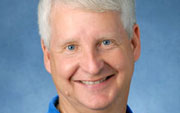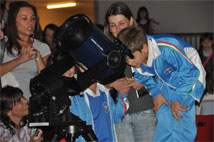NRAO eNews
April 2009 • Vol. 2, Iss. 4
- Upcoming Events
- ALMA Project Status
- VLA/VLBA/VLBI Proposals and Scheduling
- The NRAO and the Astro2010 Decadal Survey
- Celebrating Five Decades of Training Young Scientists
- 100 Hours of Astronomy in Chile
- Career Opportunities
- Past Issues
- Contact the Editor
- Subscribe
- More Information
NRAO eNews: April 2009 • Volume 2, Issue 4

The ALMA Operations Support Facility in Chile. Photo courtesy ALMA (ESO/NAOJ/NRAO).
Upcoming Events
 20th International Symposium on Space THz Technology
20th International Symposium on Space THz Technology
April 20-22, 2009 | Charlottesville, VA
 The 2009 NRAO Postdoctoral Symposium
The 2009 NRAO Postdoctoral Symposium
April 29 - May 1, 2009 | Socorro, NM
 The EVLA Vision: Stars On and Off the Main Sequence
The EVLA Vision: Stars On and Off the Main Sequence
May 26-28, 2009 | Socorro, NM
 Advancing Chemical Understanding through
Advancing Chemical Understanding through
Astronomical Observations
May 26-29, 2009 | Green Bank, WV
 Millimeter and Submillimeter Astronomy at High Angular Resolution
Millimeter and Submillimeter Astronomy at High Angular Resolution
June 8-12, 2009 |
Academia Sinica, Taipei, Taiwan
 NAIC-NRAO School on Single-Dish Radio Astronomy
NAIC-NRAO School on Single-Dish Radio Astronomy
July 12-18, 2009 | Arecibo Observatory, Puerto Rico
 Assembly, Gas Content and Star Formation History of Galaxies
Assembly, Gas Content and Star Formation History of Galaxies
September 21-24, 2009 | Charlottesville, VA
ALMA Project Status
Al Wootten
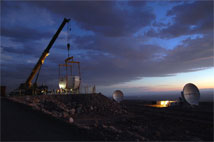
Figure 1: Major elements of the first of the ALMA antennas from the AEM consortium have arrived at the contractor's site at the ALMA Operations Support Facility (OSF) in Chile. AEM is a European consortium consisting of Thales-Alenia Space, European Industrial Engineering, and MT Mechatronics producing antennas under a contract with ESO. To the right are two antennas from Mitsubishi Electric Co awaiting further testing. Photo courtesy ALMA (ESO/NAOJ/NRAO)
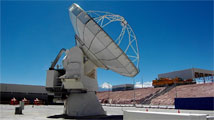
Figure 2: Now outfitted, a Vertex antenna undergoes tests at the OSF Technical Building. An antenna transporter can be seen near its shelter in the background. Further in the distance, the Licancabur Volcano stands sentry. Photo courtesy Denis Barkats.
Two Antennas Working Together
Major components of the AEM antenna, contracted by ESO, have arrived at that contractor's area at the ALMA Operations Support Facility (OSF) in northern Chile. The receiver cabin and backup support structures (BUSS) have arrived. These parts of the antenna feature carbon fiber construction, while the other antenna designs have steel receiver cabins. The AEM panels and the antenna's steel base are expected to arrive soon. The cabin and BUSS elements of a second antenna have been shipped and are en route to Chile.
There are now 14 antennas at the OSF. A second Vertex antenna is scheduled for handover to ALMA in late April; this will bring the contingent of accepted antennas to three. The equipment needed to outfit the antennas has also been arriving at the OSF. The first of the sensitive receiver systems that have been assembled and tested at the European Front-End Integration Centre (FEIC, located at Rutherford Appleton Laboratories near Oxford, England) have arrived at the OSF as well, where they have passed their first tests. They have been joined by the first water vapor radiometer, also undergoing testing.
The first two antennas have passed their initial ALMA testing, which includes pointing and holography sessions. Contractor tests adjust the antenna surfaces using a transmitter on a tower mounted at a low elevation. ALMA personnel re-measure, then adjust the surface for an elevation more appropriate for astronomical sources, followed by more holographic measurements. Both accepted antennas show excellent performance—calculations suggest that for astronomy under most conditions, the surface accuracy should be well below the targeted 25 microns.
Installed within each of the receiver systems on these telescopes are four cartridges, covering 84-116 GHz (Band 3), 211-275 GHz (Band 6), 275-373 GHz (Band 7) and 602-720 GHz (Band 9). These systems have been tuned to spectral lines within the bands and a total power spectrum and small map of the 86 GHz SiO maser line has been obtained. Recently, the two antennas have been used to demonstrate interferometry using the 104 GHz transmitter located on the No 2 holography tower.
Infrastructure construction continues at the ALMA Array Operations Site, with 85 foundations now having received concrete. Electrical, fiber, and road connections to these foundations will be laid over the coming months.
VLA/VLBA/VLBI Proposals and Scheduling
VLA/VLBA Scheduling Officers schedsoc@nrao.edu
VLA/VLBA Proposals and Scheduling
The table shows the next deadline for regular and large proposals for the Very Large Array (VLA) and the Very Long Baseline Array (VLBA).
| Array | Deadline | Observing Period | Configuration |
| VLA | 2009 Jun 1 | 2009 Sep 14 - 2009 Sep 25 | Move |
| 2009 Sep 25 - 2009 Oct 12 | DnC | ||
| 2009 Oct 12 - 2009 Oct 16 | Move | ||
| 2009 Oct 16 - 2010 Jan 11 | D | ||
| VLBA | 2009 Jun 1 | 2009 mid Sep - 2010 mid Jan |
- VLA details: Note that at the end of the D configuration in January 2010 the VLA correlator will be turned off, and the VLA will not be available for a period of approximately 6 to 8 weeks while hardware is moved from the VLA correlator to the new EVLA correlator. When observing resumes with the EVLA it will be in the D-configuration, and the order of the configuration cycle will change to D->C->B->A. The proposal deadline for the EVLA D-configuration will be 2009 Oct 1.
- VLBA details
- Proposal submission (use your "my.nrao" account or create one)
- Scheduling (dynamic and fixed date)
VLBI HSA Proposals and Scheduling
The NRAO handles regular proposals for the VLBI High Sensitivity Array (HSA) at the same deadlines as for the VLBA. The HSA includes the VLBA, VLA, GBT, and Arecibo in the U.S., plus Effelsberg in Germany.
- HSA details
- Proposal submission (use your "my.nrao" account or create one)
- Scheduling (fixed date)
Global cm VLBI Proposals and Scheduling
The NRAO and the European VLBI Network (EVN) jointly handle proposals for observing time on the Global VLBI Network at centimeter wavelengths. The deadline is 2009 Jun 1 for the session in 2009 Oct/Nov.
- VLBA details
- EVN details
- Proposal submission (use your "NorthStar" account or create one)
- Scheduling is on fixed dates during global sessions
The NRAO and the Astro2010 Decadal Survey
Mark Adams and Chris Carilli
The next astronomy decadal survey has formally begun, and the Astro2010 Decadal Survey committee has been tasked to "… survey the field of space- and ground-based astronomy and astrophysics, recommending priorities for the most important scientific and technical activities of the decade 2010-2020."
As part of the NRAO’s participation in the Decadal Survey, we have created a web site -- http://www.nrao.edu/A2010 -- that we intend to function as a clearinghouse for Astro2010 materials relevant to the many interests of the radio, millimeter, and sub-millimeter (RMS) community.
Our Astro2010 website currently includes links to:
- the five Program White Papers submitted by the NRAO to the Decadal Survey’s Program Prioritization Panels;
- all science white papers submitted to the five Science Frontier Panels that are of likely interest to the RMS community;
- a State of the Profession white paper by K.Y. Lo et al that describes "The Impact of the National Radio Astronomy Observatory"; and
- Technology Development white papers crafted by the NRAO scientists and engineers that describe proposals for developing technologies that will enable future scientific advances.
Our web site also includes links to key elements of the Astro2010 web pages.
We welcome your feedback regarding how to maximize the value of these NRAO web pages for the community.
Celebrating Five Decades of Training Young Scientists
Mark Adams and Dale Frail
Since its inception in 1959, the NRAO Summer Student Research Program has engaged nearly 1,000 young people in scientific research, and many NRAO summer students have gone on to distinguished careers in astronomy and other physical sciences. The list of former NRAO summer students includes women and men who represent a wide range of careers, research interests, geographic locations, and ethnic backgrounds.
In 2009, to mark the 50th anniversary of this program, we are featuring the stories of former NRAO summer students at our web site, http://www.nrao.edu/5050. We are grateful to those who have generously given of their time to provide their stories, and we plan to periodically add new people and stories to our web site throughout this anniversary year.
Our goal is to convey the diversity of careers and experiences that NRAO summer students have enjoyed. We hope that prospective students will be able to connect their ambitions to the achievements of NRAO summer student alumni. We also seek to humanize radio astronomy and help the public better understand the people and paths of those who choose a science career.
100 Hours of Astronomy in Chile
Sergio Cabezon
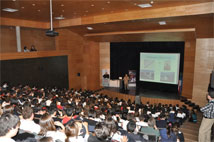
Figure 1: A full auditorium of 280 people attend a presentation by Eduardo Hardy, AUI-NRAO representative in Chile.
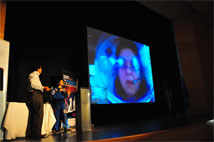
Figure 3: Carmen Gloria Jimenez connected the attendants to her talk via video-conference to the Mars Desert Research Station in the United States.
The "100 Hours of Astronomy" (100HA) programming organized by NRAO/AUI in Chile as part of the International Year of Astronomy 2009 (IYA) provided many opportunities for the public to learn about astronomical research and observatories around the world. More than 4,000 persons attended the 100HA events and enjoyed learning about the principles of radio astronomy, ALMA, and ALMA technology. This celebration involved also the collaboration of observatories, universities, government agencies and amateur astronomers.
These 100HA events were held at the Scuola Italiana Vittorio Montiglio in the outskirts of Santiago from 2-5 April. Most attendees were students and teachers, who enjoyed astronomical image exhibitions, a lecture series, planetariums shows, observing sessions, and more.
The lecture series featured 18 hour-long public talks and covered a diverse set of topics, including radio astronomy, optical astronomy, NASA space missions, astronomical software, the astronomy of Chile's indigenous peoples, light pollution, radio frequency interference, and more. This leadoff lecture in this series was titled The New Universe: The Vision from Chile and was presented by Eduardo Hardy, AUI-NRAO representative in Chile, to a standing-room-only audience of 280 persons. A talk by the first Chilean astronaut candidate, Carmen Gloria Jimenez, also proved popular. Jimenez, who is a Universidad de Concepcion faculty member, described how NASA trains its future astronauts. She connected to her audience via videoconference from the Mars Desert Research Station (MDRS) in Utah, in the United States. Thus, the Chilean audience received a long distance lesson called "Message from Mars," where the attendees could ask about the Martian climate and the daily life of astronauts in space.
More than 500 children and their families enthusiastically participated in Star Parties, an initiative that provided many with their first opportunity to witness the wonders of the night sky. The live 24-hour webcast "Around the World in 80 Telescopes," was projected on the auditorium's large screen. At the same time, a scientist guided children and their families through a planetarium show.
The Chilean 100HA programming sought to convey the central IYA theme: "The Universe, Yours to Discover." The NRAO will be collaborating with the Chilean astronomical community throughout the IYA to organize and lead activities that will introduce people of all ages and from all walks of life to the wonders of our Universe.
Career Opportunities
New Postings
ALMA System Engineers: ALMA is seeking two System Engineers to join the team in Chile in support of the construction, commissioning and operational phases of the project. The positions involve duties in ALMA partner regions, Europe, East Asia, and North America, in the form of frequent missions to contribute to the production and integration activities of the ALMA sub-systems. Frequent missions to the ALMA construction site near San Pedro de Atacama, northern Chile, are foreseen to participate in the equipment acceptance and in the integration and verification tasks.
ALMA Commissioning Scientists: The Joint ALMA Office invites applications for the position of Commissioning Scientists to be based in Santiago, Chile. These are international staff positions in the ALMA Project, the world's most sensitive mm/submm interferometer, which is currently under construction in northern Chile. The role of ALMA Commissioning Scientists is to assist the Project Scientist and Deputy Project Scientist in planning and executing the scientific commissioning of ALMA.
ALMA Science Operations Astronomers: ALMA is seeking ALMA Science Operations astronomers who will work as Astronomer on Duty (AoD) at the ALMA Operations Support Facility (OSF), and spend part of their time at the ALMA Regional Centers (ARCs) as well as in the ALMA offices in Santiago for research and data quality control.
Assistant Scientist: The Scientific Services Division is seeking an energetic person to join the scientific staff in Green Bank, West Virginia to support observers who come to the telescope as well as work on a diverse variety of projects. This may include the development and commissioning of new instrumentation on the telescope, working with the engineering staff to improve the overall telescope performance, and aiding with the data reduction pipelines needed for the GBT.
CASA Group Supervisor: The CASA Computing Division of the National Radio Astronomy Observatory is seeking a group supervisor to lead the CASA (Common Astronomy Software Applications) software group. The person filling this position will be directly involved in high-level design decisions for CASA, and will participate actively in the implementation of the resultant designs.
Head of the Joint ALMA Observatory Archive Operations Group: ALMA is seeking a Data Manager for the Joint ALMA Observatory (JAO) to lead the Archive Group and be responsible for the set-up and maintenance of the services of the JAO archives as well as for pipeline operations and data quality assurance. The Data Manager will supervise the activities of the archive operations, database contents management and pipeline operations.
Software Engineer (KFPA): The K-band Focal Plane Array Project at the Robert C. Byrd Green Bank Telescope (GBT) is seeking a Software Engineer to develop monitor and control software. The seven beam array under development will improve mapping speed and map calibration for extended molecular regions. Upon completion and commissioning of the seven beam array, work will commence on a larger array and complementary hardware infrastructure.
Systems Astronomers - Joint ALMA Observatory: ALMA is seeking ALMA system astronomers who will be the experts on the performance of ALMA, and will provide advice and assistance to ALMA operations working closely with the system engineers in the Department of Technical Services.
 Zoom
Zoom